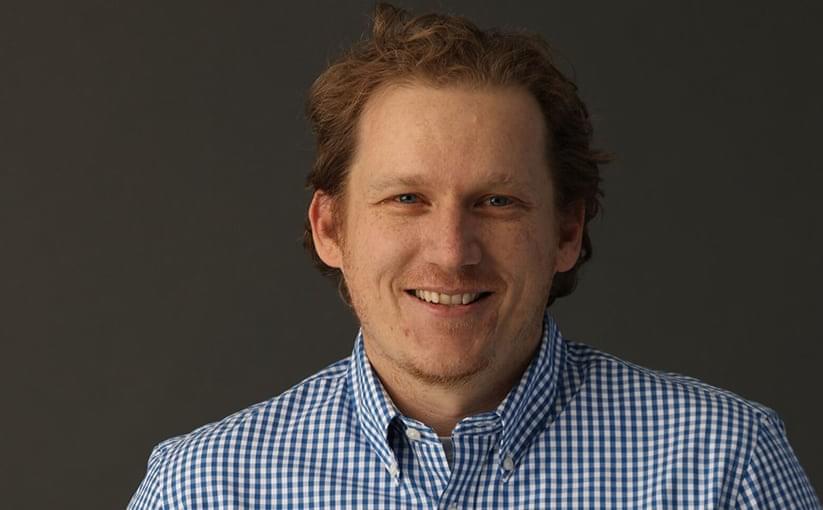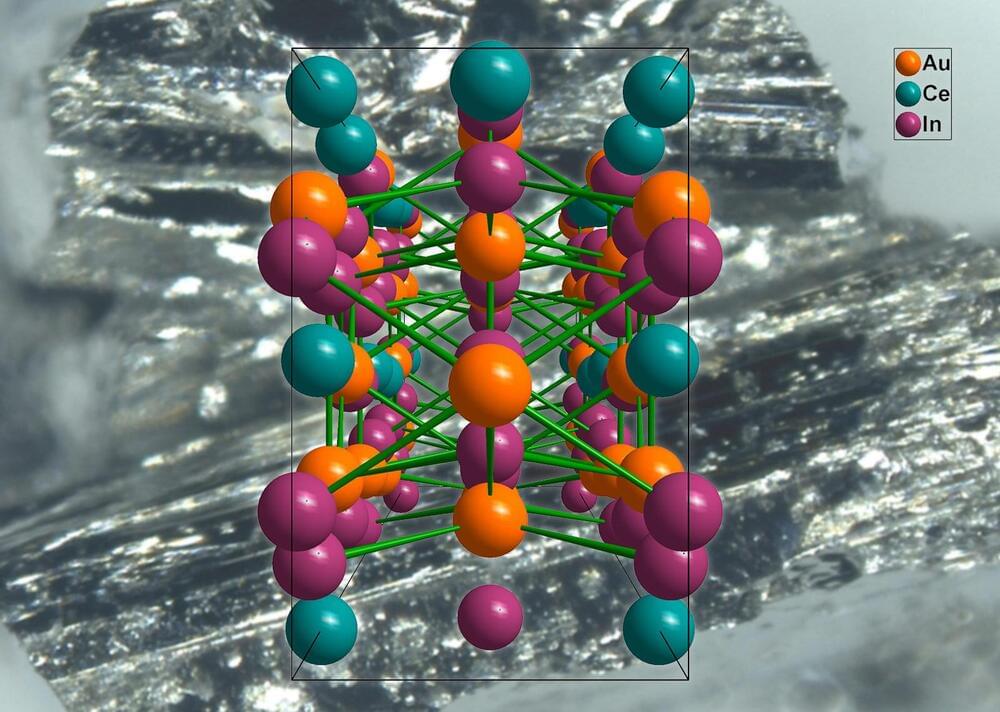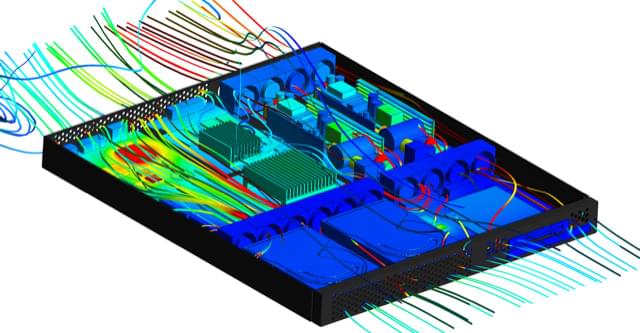Nine Inch Nails “Me I’m Not” remixed with US military, math, science, and computer footage from the Prelinger Archives.
Category: computing – Page 512

Turning a quantum advantage: IBM’s Jay Gambetta on seamlessly integrating quantum and classical computing
Companies and research labs across the globe are working towards getting their nascent quantum technologies out of the lab and into the real world, with the US technology giant IBM being a key player. In May this year, IBM Quantum unveiled its latest roadmap for the future of quantum computing in the coming decade, and the firm has set some ambitious targets. Having announced its Eagle processor with 127 quantum bits (qubits) last year, the company is now developing the 433-qubit Osprey processor for a debut later this year, to be followed in 2023 by the 1121-qubit Condor.
But beyond that, the company says, the game will switch to assembling such processors into modular circuits, in which the chips are wired together via sparser quantum or classical interconnections. That effort will culminate in what they refer to as their 4158-qubit Kookaburra device in 2025. Beyond then, IBM forecasts modular processors with 100,000 or more qubits, capable of computing without the errors that currently make quantum computing a matter of finding workarounds for the noisiness of the qubits. With this approach, the company’s quantum computing team is confident that it can achieve a general “quantum advantage”, where quantum computers will consistently outperform classical computers and conduct complex computations beyond the means of classical devices.
While he was in London on his way to the 28 th Solvay conference in Brussels, which tackled quantum information, Physics World caught up with physicist Jay Gambetta, vice-president of IBM Quantum. Having spearheaded much of the company’s advances over the past two decades, Gambetta explained how these goals might be reached and what they will entail for the future of quantum computing.

Thread: Support us! We are indie developers!
This site is made by just two indie developers on a laptop doing marketing, support and development! Read more about the story.
Become a Premium Member ($3/month or $30/year) and get exclusive features!

Her work helped her boss win the Nobel Prize. Now the spotlight is on her
Scientists have long studied the work of Subrahmanyan Chandrasekhar, the Indian-born American astrophysicist who won the Nobel Prize in 1983, but few know that his research on stellar and planetary dynamics owes a deep debt of gratitude to an almost forgotten woman: Donna DeEtte Elbert.
From 1948 to 1979, Elbert worked as a “computer” for Chandrasekhar, tirelessly devising and solving mathematical equations by hand. Though she shared authorship with the Nobel laureate on 18 papers and Chandrasekhar enthusiastically acknowledged her seminal contributions, her greatest achievement went unrecognized until a postdoctoral scholar at UCLA connected threads in Chandrasekhar’s work that all led back to Elbert.
Elbert’s achievement? Before anyone else, she predicted the conditions argued to be optimal for a planet or star to generate its own magnetic field, said the scholar, Susanne Horn, who has spent half a decade building on Elbert’s work.

Designing new quantum materials on the computer
How do you find novel materials with very specific properties—for example, special electronic properties which are needed for quantum computers? This is usually a very complicated task: various compounds are created, in which potentially promising atoms are arranged in certain crystal structures, and then the material is examined, for example in the low-temperature laboratory of TU Wien.
Now, a cooperation between Rice University (Texas), TU Wien and other international research institutions has succeeded in tracking down suitable materials on the computer. New theoretical methods are used to identify particularly promising candidates from the vast number of possible materials. Measurements at TU Wien have shown the materials do indeed have the required properties and the method works. This is an important step forward for research on quantum materials. The results have now been published in the journal Nature Physics.

Scientists Have Long Dreamed of a Memory Prosthesis. The First Human Trials Look Promising
For the memory prosthetic, the team focused on two specific regions: CA1 and CA3, which form a highly interconnected neural circuit. Decades of work in rodents, primates, and humans have pointed to this neural highway as the crux for encoding memories.
The team members, led by Drs. Dong Song from the University of Southern California and Robert Hampson at Wake Forest School of Medicine, are no strangers to memory prosthetics. With “memory bioengineer” Dr. Theodore Berger—who’s worked on hijacking the CA3-CA1 circuit for memory improvement for over three decades—the dream team had their first success in humans in 2015.
The central idea is simple: replicate the hippocampus’ signals with a digital replace ment. It’s no easy task. Unlike computer circuits, neural circuits are non-linear. This means that signals are often extremely noisy and overlap in time, which bolsters—or inhibits—neural signals. As Berger said at the time: “It’s a chaotic black box.”

Superposition in Quantum Computers — Computerphile
Parting the veil of mystery on quantum superposition using waves. Professor Phil Moriarty takes us through it.
Phil’s blogpost on the subject: https://muircheartblog.wpcomstaging.com/2021/10/26/superposi…erstition/
This video was formerly called What is Quantum Superposition?
https://www.facebook.com/computerphile.
https://twitter.com/computer_phile.
This video was filmed and edited by Sean Riley.
Computer Science at the University of Nottingham: https://bit.ly/nottscomputer.

Double-transmon coupler will realize faster, more accurate superconducting quantum computers
Researchers at Toshiba Corporation have achieved a breakthrough in quantum computer architecture: the basic design for a double-transmon coupler that will improve the speed and accuracy of quantum computation in tunable couplers. The coupler is a key device in determining the performance of superconducting quantum computers.
Tunable couplers in a superconducting quantum computer link two qubits and perform quantum computations by turning on and off the coupling between them. Current technology can turn off the coupling of transmon qubits with close frequencies, but this is prone to crosstalk errors that occur on one of the qubits when the other qubit is irradiated with electromagnetic waves for control. In addition, current technology cannot completely turn off coupling for qubits with significantly different frequencies, resulting in errors due to residual coupling.
Toshiba has recently devised a double-transmon coupler that can completely turn on and off the coupling between qubits with significantly different frequencies. Completely turning on enables high-speed quantum computations with strong coupling, while completely turning off eliminates residual coupling, which improves quantum computation speeds and accuracy. Simulations with the new technology have shown it realizes two-qubit gates, basic operations in quantum computation, with an accuracy of 99.99% and a processing time of only 24 ns.

Designing For Thermal
Solutions are needed early as thermal becomes a systems issue.
Heat has emerged as a major concern for semiconductors in every form factor, from digital watches to data centers, and it is becoming more of a problem at advanced nodes and in advanced packages where that heat is especially difficult to dissipate.
Temperatures at the base of finFETs and GAA FETs can differ from those at the top of the transistor structures. They also can vary depending on how devices are used, how often and where they are used, and by the diameter of the wires used in a particular design, or even a particular area of a chip or package. It’s not unusual for systems to throttle back performance because some circuits are running too hot.